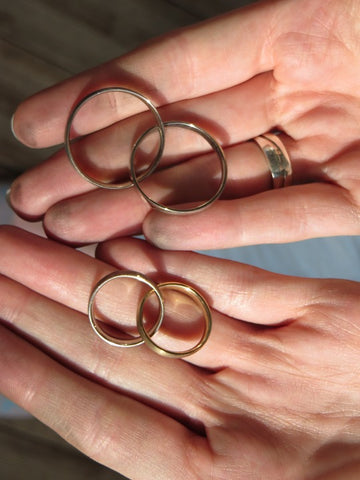Gold plating is the process of adding a thin layer of gold onto the surface of another type of metal. Gold plating is done to make jewelry that is made of inferior metal look like gold.

(Pixabay / firemystery)
Gold plating can be done at home because it is a simple technique if you have the proper tools and knowledge. The first step is to purchase a complete gold plating kit. It usually includes a liquid gold solution, a source of electricity, and a plating wand that links to the electricity source. This wand is essential for bonding the gold. You can choose the type of gold-plating solution to use: 14-karat, 18-karat, or 24-karat.
Prepare the Surface
First, you will need to clean the surface of the metal to be plated and remove all the dirt and oil particles. The surface to be plated can be stripped, polished, sandblasted, or tumbled in order to get rid of all of the dirt. This cleaning can be accomplished by using solvents, abrasive materials, or by acid etching. You must prepare the surface properly, or you could contaminate the tank or risk having an incomplete or poor adherence.
Clean Thoroughly
After preparing the surface to be plated, it must be cleaned, usually using electrocleaning, steaming, or ultrasonic cleaning. This is just a second round of deep cleaning that makes sure no oil or dirt remains. Steam cleaning is a good way of cleaning jewelry pieces with intricate crannies.
Rinse to Remove Cleaners
The piece of jewelry to be gold plated must be rinsed with water to remove any residue of the cleaning agents that were used.
Adhere the Strike Layer
A strike layer (also known as a flash layer) is a very thin layer of nickel-plating that is adhered to the original metal piece. The nickel layer will improve the bond between the underlying surface and the gold. It also prevents contaminants from spoiling the gold plating tank, and it stops metals from mixing and possibly reacting negatively.
Second Rinse
The piece of jewelry needs to be thoroughly washed with water again to remove any residue of the cleaners.
Apply the Base Coat
This step adds layers of metals such as silver, nickel, and copper. In the final step, gold is deposited on top of the surface.
Final Coat
The piece of jewelry is submerged into the plating solution to attract the gold ions or any final metal that will show on the surface of the jewelry. Different metals require different temperatures and voltages.
The jewelry pieces to be plated are hung from a cathode bar. This is a fancy name for a rod with a negative electric charge running through it. Next, they are submerged in the tank of gold-plating solution. which is positively charged. The negatively charged pieces of jewelry will attract the gold ions that are positively charged, getting plated in the process.
Final Rinse
Finally, the plated jewelry is rinsed in water and hung to dry, making sure that the different pieces do not touch each other.
Gold plating is an exciting pursuit that combines both science and art. Once people start, they often find that they become addicted to this rewarding habit.
